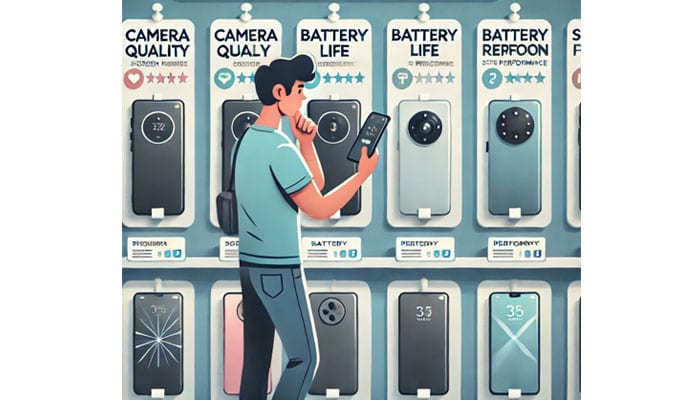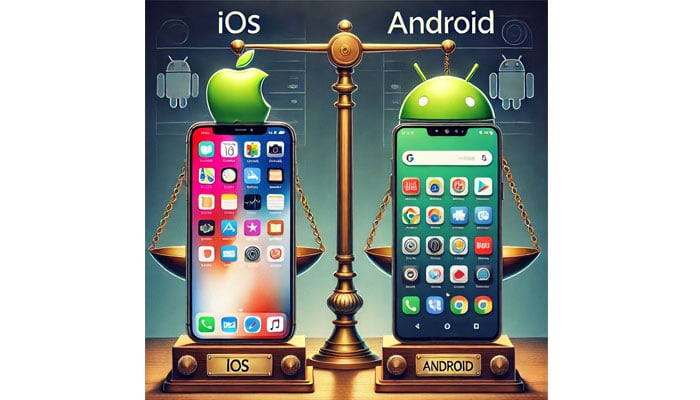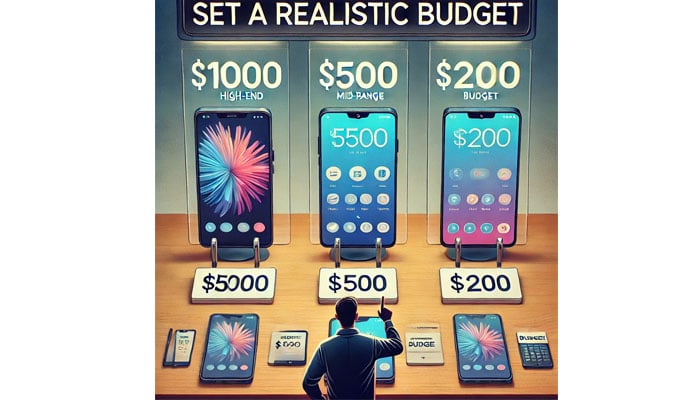
Finding the right phone in today’s vast market can be overwhelming, but by focusing on a few key factors, you can narrow down your choices and make a well-informed decision. Here’s a guide to help you find the perfect phone that suits your needs:

Before diving into specifications and brand comparisons, figure out what matters most to you in a smartphone. This could include:
- Camera Quality: Do you need a high-quality camera for photography or social media?
- Battery Life: Are you constantly on the go and need a phone that can last the whole day?
- Performance: Do you need a phone that can handle heavy multitasking, gaming, or high-end apps?
- Display: Are you looking for a phone with a vibrant, high-resolution screen for media consumption?
- Budget: How much are you willing to spend? Knowing your budget helps eliminate unnecessary options.

The two major operating systems are Android and iOS, and choosing between them often comes down to personal preference and ecosystem compatibility.
- iOS (Apple): Known for its user-friendly interface, smooth integration with other Apple products (Mac, iPad, Apple Watch), and timely updates. If you already own Apple devices, an iPhone might make sense for seamless integration.
- Android: Offers more variety in terms of brands, price ranges, and customization options. If you like flexibility and don’t mind learning a slightly steeper curve, Android gives you more control over your device’s experience.

Phones range from budget options to premium flagships. Knowing your budget will help filter out phones that aren’t relevant to you. Consider whether you need:
- Flagship phones (over $800): The latest iPhones or Samsung Galaxy S models offer top-tier performance, build quality, and features but come at a high price.
- Mid-range phones ($300-$800): These phones offer excellent value for money, often sacrificing a few premium features (like wireless charging or top-end cameras) while still providing strong performance. Examples include the Google Pixel A series or the Samsung Galaxy A series.
- Budget phones (under $300): If your needs are simple (basic apps, social media, calls), budget phones from brands like Xiaomi, Motorola, and Nokia offer good performance for the price.
Understanding specs can help you avoid paying extra for features you may not need:
- Processor (CPU): High-end processors (like Apple’s A-series or Qualcomm’s Snapdragon 8-series) are great for gaming, video editing, and future-proofing, but if you’re just using your phone for calls, messaging, and social media, a mid-range processor should be enough.
- RAM & Storage: Most users will be fine with 4-6GB of RAM and 64-128GB of storage, though if you plan on storing lots of media or using demanding apps, go for 8GB of RAM or more and at least 128GB of storage. Look for expandable storage options (via microSD cards) if you’re opting for an Android phone.
- Battery Life: Look for a phone with at least a 4,000 mAh battery if you want all-day battery life with moderate use. Phones with fast charging support are a bonus, ensuring you can top up your battery quickly.
If photography is a priority, don’t focus solely on the megapixel count. Consider:
- Aperture (the lower the number, the better for low-light photos).
- Image processing capabilities.
- Extra lenses (ultra-wide, telephoto, macro) for versatility.
- Research real-world camera reviews and comparisons as they often give better insight into image quality than the spec sheet alone.
Software updates keep your phone secure and add new features over time. iPhones generally receive updates for 5+ years, while Android phones vary depending on the manufacturer. Brands like Google (Pixel), Samsung, and OnePlus are known for better update cycles.
Consider how the phone feels in your hand. Does the size fit comfortably in your pocket? Is the build quality durable enough for your lifestyle? If you’re prone to dropping your phone, a model with Gorilla Glass or even water and dust resistance (IP67/68 rating) could be a good choice.
Sometimes the brand itself can guide your decision:
- Apple’s Ecosystem: If you’re invested in the Apple ecosystem with a MacBook, iPad, or Apple Watch, it makes sense to stick with an iPhone.
- Google’s Ecosystem: If you use Google services extensively (Gmail, Google Drive, Google Photos), the Google Pixel phones offer seamless integration with these services.
- Samsung’s Ecosystem: Samsung offers a wide range of devices that integrate well, from smartphones to smartwatches, tablets, and home appliances.
Once you’ve narrowed down your options, look at real-world reviews, YouTube videos, or hands-on tests to get a sense of how the phone performs in daily life. Reviews from tech sites, YouTubers, and forums like Reddit can provide detailed insights on the device’s strengths and weaknesses.
If possible, visit a store and try out the phone you’re considering. How does it feel in your hand? Is the display as crisp as you’d like? Are the camera and interface responsive enough? Testing the phone in person can prevent buyer’s remorse.
Finding the right phone is about balancing your needs with your budget and preferences. Focus on what matters most to you, whether that’s the camera, performance, or battery life, and don’t be swayed by flashy features you may never use. By taking the time to research and prioritize, you’ll land the phone that fits your lifestyle perfectly.
In this day and age when there is a hodgepodge of mobile phones that vary in features, size, price, color, brand, and a whole lot more, sometimes it could get confusing how to find the right phone. After all, most of these phones are available almost everywhere and come in several payment options to make it easier for you.
However, if you really want to land the best deal on how to find the right phone, you must narrow down your list of phone requirements and set a strict budget. This way, your search will be significantly shorter and you have a bigger chance of getting the best deal on the market today.
Naturally, the first thing you need to figure out is your budget. It’s wise to set a range rather than an exact amount because sometimes, a difference of a couple hundred bucks in price could mean a better quality camera or a bigger internal memory. You’ll also have more options to compare, which will help you decide faster.
When you’ve set your budget range, you will have significantly narrowed down your options to brands you can actually afford. Now, you have more time to nitpick every feature and the littlest discrepancies among phone models. This will also give you the chance to figure out exactly what is the most important consideration for you in finding the right phone.
But with all the features that all mobile phones have, one consideration that many people forget is the battery life. This is an important factor when you’re trying to find the right phone, especially when you want your mobile phone to have a lot of features.
If the battery life is weak, you won’t be able to enjoy the features on your phones. So there you go. If you want to know how to find the right phone for you, make sure you have all of these covered.



